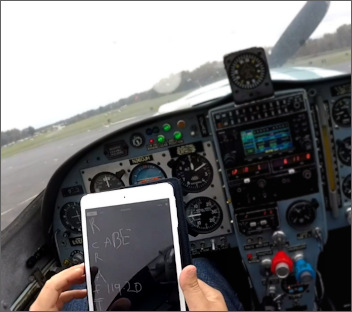Subscriber question:
I’ve heard that the FAA now publishes phone numbers for Clearance Delivery. Does this mean I shouldn’t use the clearance delivery frequency if one is listed? Or shouldn’t call Flight Service? Who do I call for my IFR clearance? — Larry F.
Jeff:

“The short answer to your questions is: If there’s a frequency for Clearance Delivery listed on an approach chart or the Chart Supplement, call that first. If there’s no frequency, or you can’t raise anyone on the radio, call the phone number.
The background is that getting your IFR clearance on the ground at a non-towered airport was a problem. Sometimes a frequency was listed, but you couldn’t get through from the ground. Sometimes you asked the last controller you had before landing for tips on the best frequency to call on departure, but that can lead someone to launch into marginal conditions trying to get their clearance in the air. That didn’t always work out so well.
Flight Service has a number just for clearances (888-766-8267), but sometimes that takes forever. And if there’s a problem with the clearance, it’s literally a game of telephone with the Flight Service Specialist trying to negotiate with ATC on your behalf.
The FAA now publishes phone numbers for the Approach or Center facility controlling non-towered airports with instrument approaches. This phone number is a direct line to a controller. This controller isn’t working traffic. Instead, they’re handling other duties, including departures from several airports. You can get your clearance and release from this person, just like you could with Flight Service, but it’s more efficient. This controller is in the facility talking to the other controllers for you, rather than in a room somewhere in Virginia calling ATC facilities on the phone. In fact, Flight Service’s dedicated clearance delivery number is getting phased out.
Don’t look for these ATC phone numbers on your instrument approach charts; they’re not there. The phone numbers are published in the Chart Supplement, which we used to call the A/FD. It’ll be down in the communications section. Every airport with an instrument approach should have a phone number listed, eventually. If you don’t see it, or you’re departing an airport without an instrument approach, use whatever number you find for the nearest instrument airport.
It can be a bit confusing that these phone numbers are published for many towered airports as well. Remember that if the tower is open, call on the radio. You call the airport’s Clearance Delivery frequency if one is listed, or you call Ground if no frequency is listed. The phone numbers for towered airports are primarily there for when the tower is closed—making that a non-towered airport. Sometimes the primary approach facility is also part-time, so you’ll see a second phone number to use when no one answers at the first one.
What about RCOs and GCOs, which are there as an alternative to calling Flight Service on the phone? These still work and go to Flight Service as before. However, if you’ve got a phone number for an actual ATC facility, good cell reception, and a Bluetooth headset, it’s probably easier to just use the phone.”
Will the new Clearance Delivery phone numbers make it easier to pick up an IFR clearance at non-towered airports?
